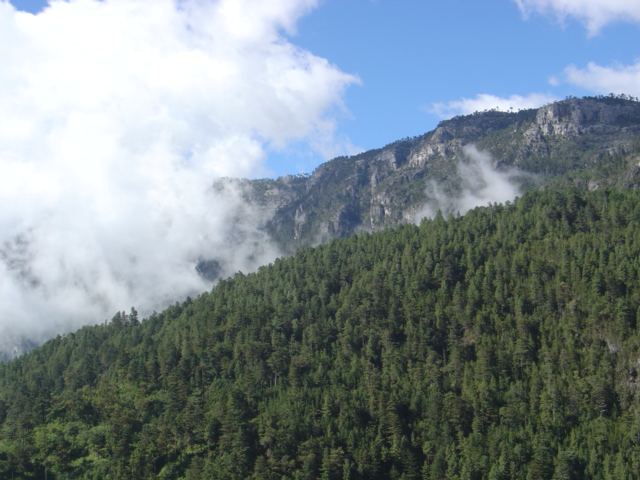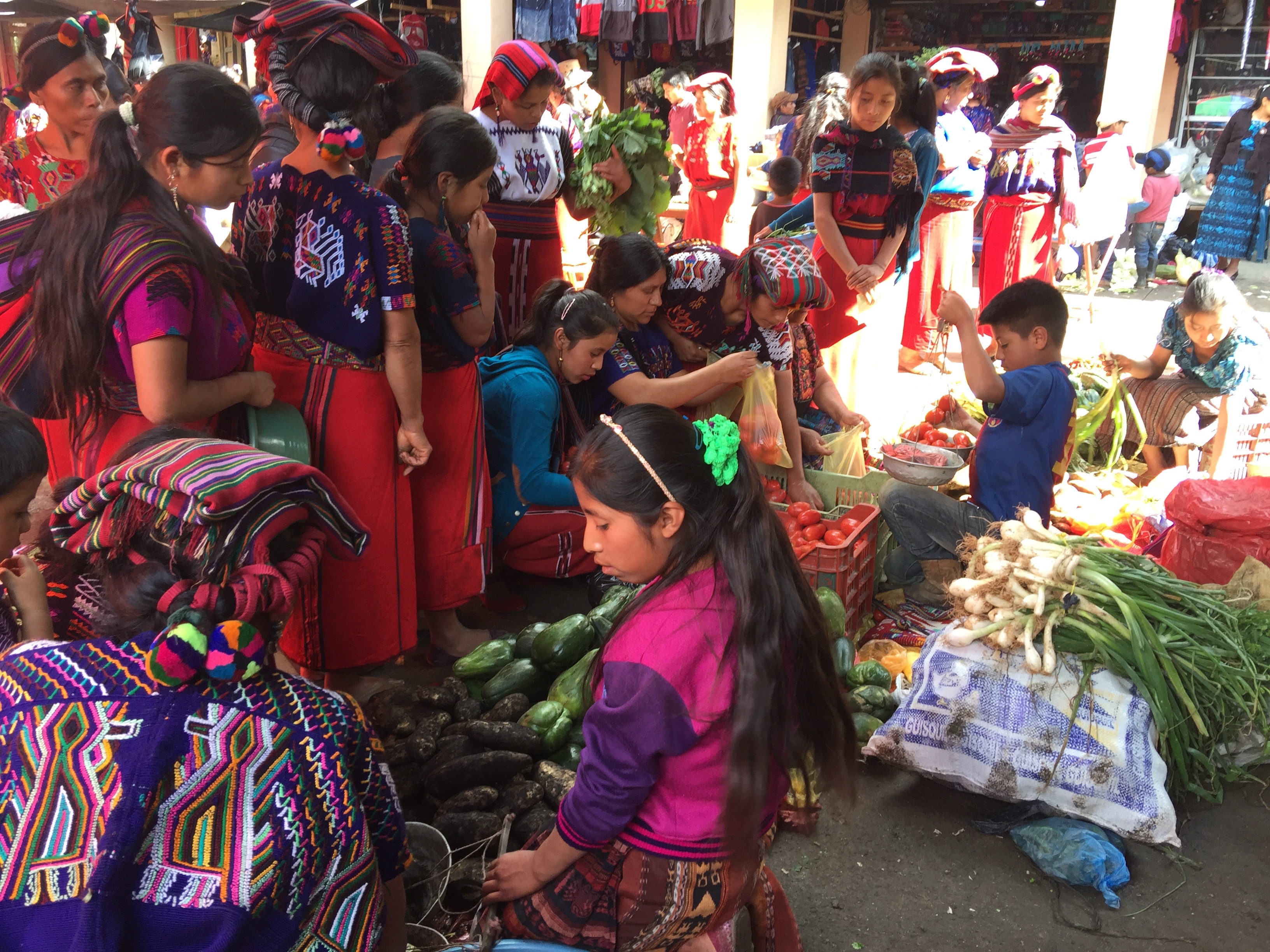|
Quiché Department
Quiché () is a department of Guatemala. It is in the heartland of the K'iche' (Quiché) people, to the north-west of Guatemala City. The capital is Santa Cruz del Quiché. The word K'iche comes from the language of the same name, which means "many trees". Population Quiché has historically been one of the most populous departments of Guatemala. At the 2018 census it had a population of 949,261. Maya people, Mayans account for 88.6% of the department's population. K'iche' people are the largest Mayan ethnic group in the department, and account for 65.1% of the total population. The department is named after them. While most of its indigenous population speaks the K'iche' language, K'iche' (Quiché) language, other Mayan languages spoken in the department are Ixil language, Ixil (Santa Maria Nebaj, Nebaj - Chajul - San Juan Cotzal, Cotzal area), Uspantek language, Uspantek (Uspantán area), Sakapultek language, Sakapultek (Sacapulas area), as well as Poqomchi' language, Poqomc ... [...More Info...] [...Related Items...] OR: [Wikipedia] [Google] [Baidu] |
Departments Of Guatemala
Guatemala is divided into 22 Department (country subdivision), departments (Spanish language, Spanish: ''departamentos'') which are in turn divided into 340 Municipalities of Guatemala, municipalities. In addition, Guatemala has claimed that all or part of the nation of Belize is a department of Guatemala, and this claim is sometimes reflected in maps of the region. Guatemala formally recognized Belize in 1991, but the Belizean–Guatemalan territorial dispute, border disputes between the two nations have not been resolved. Departments See also *ISO 3166-2:GT References External resources Interactive map of Guatemalan departments and municipalities {{Americas topic, Administrative divisions of Departments of Guatemala, Subdivisions of Guatemala Lists of administrative divisions, Guatemala, Departments Administrative divisions in North America, Guatemala 1 First-level admin ... [...More Info...] [...Related Items...] OR: [Wikipedia] [Google] [Baidu] |
Maya People
The Maya peoples () are an ethnolinguistic group of indigenous peoples of Mesoamerica. The ancient Maya civilization was formed by members of this group, and today's Maya are generally descended from people who lived within that historical region. Today they inhabit southern Mexico, Guatemala, Belize, El Salvador, and Honduras. "Maya" is a modern collective term for the peoples of the region, however, the term was not historically used by the indigenous populations themselves. There was no common sense of identity or political unity among the distinct populations, societies and ethnic groups because they each had their own particular traditions, cultures and historical identity. It is estimated that seven million Maya were living in this area at the start of the 21st century. Guatemala, southern Mexico and the Yucatán Peninsula, Belize, El Salvador, and western Honduras have managed to maintain numerous remnants of their ancient cultural heritage. Some are quite integrated int ... [...More Info...] [...Related Items...] OR: [Wikipedia] [Google] [Baidu] |
Alta Verapaz
Alta Verapaz () is a Departments of Guatemala, department in the north central part of Guatemala. The capital and chief city of the department is Cobán. Verapaz is bordered to the north by Petén (department), El Petén, to the east by Izabal Department, Izabal, to the south by Zacapa (department), Zacapa, El Progreso Department, El Progreso, and Baja Verapaz, and to the west by El Quiché. Also in Alta Verapaz are the towns of Chisec, San Pedro Carchá and San Cristóbal Verapaz. History In Pre-Columbian times this area was part of the Maya civilization. When the Spanish Conquistadores came in the 1520s they conquered the central and southern highlands of Guatemala, but were driven back from this region by fierce native resistance. Unknown to the history books of this region, local oral history speaks of a former slave ship capsizing prior to the Spaniards arriving upon this area of Guatemala. The former African slaves moved inland, and joined forces with the local indig ... [...More Info...] [...Related Items...] OR: [Wikipedia] [Google] [Baidu] |
Sacapulas
Sacapulas is a town and municipality in the Guatemalan department of El Quiché. History Pre Hispanic era Worried about the defection of the aj K’ub’ul family chief -who had taken his family away in order to look for fertile and, above all, pacific land-, the K’iche’ king sent a group of soldiers to control every single movement of them. He was afraid that the aj K'ub'ul would look for reinforcements from other ethnic group in the area to form a strong army and then attack the k'iche's. The warriors settled to the east of the aj K’ub’ul and since the latter had moved away to look for peace and tranquility, they were a very peaceful community. And that is exactly what the warriors inform the K’iche’ king, reassuring him by telling that he should not worry about the exiled group, as they were really peaceful. As time went by, the k'iche' warriors realized that the aj K'ub'ul life was very different from the one they were used to have under the ruling of their ... [...More Info...] [...Related Items...] OR: [Wikipedia] [Google] [Baidu] |
Sakapultek Language
Sakapultek or Sacapulteco is a Mayan language very closely related to Kʼicheʼ language, Kʼicheʼ (Quiché). It is spoken by approximately 15,000 people in Sacapulas, Quiché Department, El Quiché department and in Guatemala City.The official 2002 census mentions a lower figure of 6.973 Sakapulteko speakers. See References External links The John William Dubois Collection Of Sacapultec Sound Recordingsat the Survey of California and Other Indian LanguagesCollections in the Archive of the Indigenous Languages of Latin America Agglutinative languages Mayan languages Indigenous languages of Central America Mesoamerican languages Languages of Guatemala {{IndigenousAmerican-lang-stub ... [...More Info...] [...Related Items...] OR: [Wikipedia] [Google] [Baidu] |
Uspantán
Uspantán is a municipality in the Guatemalan department of El Quiché. It is one of the largest municipalities of El Quiché and stretches from the mountainous highlands in the South to the tropical lowlands in the North. The municipal seat is in Villa de San Miguel Uspantán with a population of 2,800. The birthplace of Nobel Peace Prize winner Rigoberta Menchú, a community named Laj Chimel, is located Uspantán not far from the municipal seat. Completion of paving on the road in from Chichicastenango has brought a small tourist boom to the town. The municipality includes the pre-Columbian Maya archaeological site of Chitinamit Chitinamit (or Chitinamit-Chujuyup) is an archeological site of the Maya civilization in the highlands of Guatemala. It has been identified as Jakawitz, the first capital of the K'iche' Maya. The site is located in the El Quiché department, in ..., believed to be Jakawitz, the first capital of the K'iche' Maya.Ministerio de Cultura y Deportes. I ... [...More Info...] [...Related Items...] OR: [Wikipedia] [Google] [Baidu] |
Uspantek Language
The Uspanteko (Uspanteco, Uspanteko, Uspantec) is a Mayan language of Guatemala, closely related to Kʼicheʼ. It is spoken in the Uspantán and Playa Grande Ixcán ''municipios'', in the Department . It is also one of only three Mayan languages to have developed contrastive tone (the others being [...More Info...] [...Related Items...] OR: [Wikipedia] [Google] [Baidu] |
San Juan Cotzal
San Juan Cotzal () is a town and municipality in the Guatemalan department of El Quiché. San Juan Cotzal is part of the Ixil Community, along with Santa Maria Nebaj and San Gaspar Chajul. History Pre-Hispanic era Worried about the defection of the aj K’ub’ul family chief, who had taken his family away to look for fertile and, above all, Pacific land, the K’iche’ king sent a group of soldiers to control their movements. He was afraid that the aj K'ub'ul would look for reinforcements from other ethnic groups in the area to form a strong army and attack the K'iche's. The warriors settled to the east of the aj K’ub’ul and, since the K'iche's had moved away to look for an undisturbed place to settle, they were a peaceful community. The warriors informed the K’iche’ king as much, reassuring him that he had no reason to worry about the exiled group. As time went by, the K'iche' warriors realized that the aj K'ub'ul life was very different from the one they were ... [...More Info...] [...Related Items...] OR: [Wikipedia] [Google] [Baidu] |
Chajul
Chajul (; full name San Gaspar Chajul) is a town and municipality in the Guatemalan department of El Quiché. Chajul is part of the Ixil Community, along with San Juan Cotzal and Santa Maria Nebaj. The Ixil region is isolated by beautiful mountains and has maintained its rich Ixil Maya traditions and language. Chajul, Nebaj, and Cotzal make up the Ixil Region in the Department of Quiché in the Western Highlands of Guatemala. Having been at the heart of the 36-year civil war, Chajul experiences post-war challenges such as emotional trauma, land displacement, and fragmented families. Additionally, unemployment is high, large families live in one-room adobe houses with open cooking fires, opportunities for women are scarce, and family- and gender-based violence are common. The community has a corn-based agricultural economy in which adults struggle daily to feed their families and the average income is $1–3 per day. A 2002 study revealed that less than 1% of children graduate from h ... [...More Info...] [...Related Items...] OR: [Wikipedia] [Google] [Baidu] |
Santa Maria Nebaj
Santa Maria Nebaj (; usually abbreviated to Nebaj) is a town and municipality in the Guatemalan department of El Quiché. Santa Maria Nebaj is part of the Ixil Community, along with San Juan Cotzal and San Gaspar Chajul. Native residents speak the Mayan Ixil language. The community is named in part for Nebaj, a pre-Columbian archaeological site of the Maya civilization. History Spanish conquest In the ten years after the fall of Zaculeu, various Spanish expeditions crossed into the Sierra de los Cuchumatanes and engaged in the gradual and complex conquest of the Chuj and Q'anjob'al peoples. The Spanish hoped to extract gold, silver and other riches from the mountains, but their remoteness, the difficult terrain, and relatively low population made the conquest and exploitation of this aea extremely difficult. The population of the Cuchumatanes is estimated to have been 260,000 before European contact. By the time the Spanish arrived in the region, the Mayans had alread ... [...More Info...] [...Related Items...] OR: [Wikipedia] [Google] [Baidu] |


